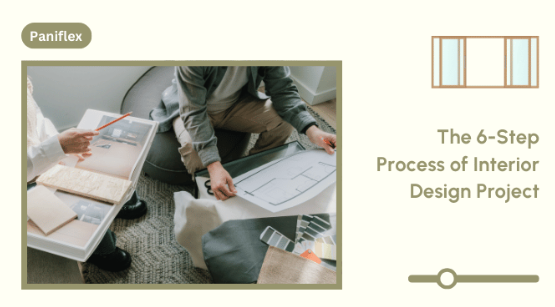As an interior designer specializing in residential spaces, understanding and mastering the six key interior design project phases is crucial for delivering exceptional results tailored to your client’s unique needs and preferences.
By following a structured approach and customizing each phase to suit individual requirements, you’ll be well-equipped to navigate the complexities of residential design projects, ensuring a seamless experience for your clients from concept to completion. In this comprehensive guide, we’ll walk you through the six essential interior design project phases, highlighting the importance of aligning design with client needs at every stage. Get ready to elevate your interior design skills and create personalized spaces that reflect your client’s dreams and aspirations!
The 6 Essential Interior Design Project Phases:
1. Programming: Aligning Design with Client Needs
The success of any interior design project hinges on a deep understanding of your client’s unique needs, preferences, and lifestyle. The programming phase is vital for:
- Conducting in-depth consultations with clients to discuss their vision, style preferences, and functional requirements
- Analyzing the site location to optimize views, natural light, and overall spatial flow
- Setting realistic project timelines and budgets that align with client expectations
By thoroughly exploring your client’s needs during this initial interior design project phase, you’ll lay the groundwork for a customized residential design that exceeds their expectations.
2. Schematic Design: Developing the Conceptual Framework
With a clear understanding of your client’s needs, the schematic design phase allows you to translate their vision into tangible design concepts. This interior design project phase involves:
- Engaging with local municipalities to ensure compliance with building codes and regulations
- Developing initial floor plans that optimize room sizes, layout, and overall flow, tailored to your client’s lifestyle
- Presenting conceptual designs to clients for feedback and refinement
As you navigate this crucial interior design project phase, remember the importance of creating a functional and aesthetically pleasing space that reflects your client’s unique personality and style.
Ready to experience the benefits of custom closet doors? Explore our range of Paniflex products now.
3. Design Development: Refining the Details
Once the conceptual framework is established, the design development phase is where you’ll fine-tune every aspect of the interior design project. This phase encompasses:
- Selecting interior and exterior finishes, materials, and color palettes that harmonize with your client’s preferences
- Determining the ideal placement of windows, doors, and architectural features to enhance the overall design
- Detailing kitchen layouts, bathroom designs, millwork, and other custom elements to ensure functionality and visual appeal
- Creating detailed interior elevations for cabinetry, lighting, and tile work to guide the construction process
By meticulously refining the details during this interior design project phase, you’ll create a cohesive and captivating space that brings your client’s vision to life.
Want to build the best custom doors in the business for your client?
4. Contract Documents: Preparing for Construction
Preparing comprehensive contract documents clearly and effectively communicates your design intent, minimizing the risk of errors or misinterpretations during the construction phase. This interior design project phase includes:
- Generating comprehensive architectural and design drawings, including elevations, floor plans, and site plans
- Specifying materials, finishes, and installation methods to facilitate accurate bidding and construction
- Compiling a detailed package for contractors, builders, and permitting authorities
5. Permitting & Bidding: Navigating Regulations and Selecting Contractors
Before construction can commence, it’s crucial to obtain the necessary permits and select the right contractors for the job. This phase involves submitting required documents and drawings to local building authorities for approval, collaborating with contractors and builders to ensure all regulatory requirements are met, providing guidance during the tendering process, including communicating with potential contractors and analyzing bids, and selecting contractors based on their expertise, reputation, and ability to execute your design vision.
By actively participating in this interior design project phase, you’ll help your client navigate the complexities of regulations and ensure the right team is in place to bring the project to fruition.
6. Project Administration: Overseeing Implementation
As the interior design project moves into the construction phase, your role as a designer shifts to project administration. This final interior design project phase involves:
- Closely monitoring construction progress to ensure adherence to the approved design
- Addressing any on-site issues or changes that arise, working collaboratively with contractors and clients
- Conducting regular site visits to assess quality, provide guidance, and ensure the project stays on track
- Managing change orders and maintaining detailed documentation throughout the construction process
By remaining actively involved during this crucial interior design project phase, you’ll maintain the integrity of your design and that the final result aligns with your client’s expectations.
Ready to experience the benefits of custom closet doors? Explore our range of Paniflex products now.
Concluding Thoughts
Mastering the six interior design project phases is key to delivering exceptional results that resonate with your clients. By understanding the importance of each phase and tailoring the process to suit individual needs, you’ll be well-positioned to create stunning, functional, and personalized residential spaces.
Remember, the success of an interior design project hinges on effective communication, attention to detail, and an unwavering commitment to your client’s vision. By embracing these principles and dedicating yourself to mastering each interior design project phase, you’ll establish yourself as a sought-after professional in the field, ready to transform homes and lives, one project at a time






